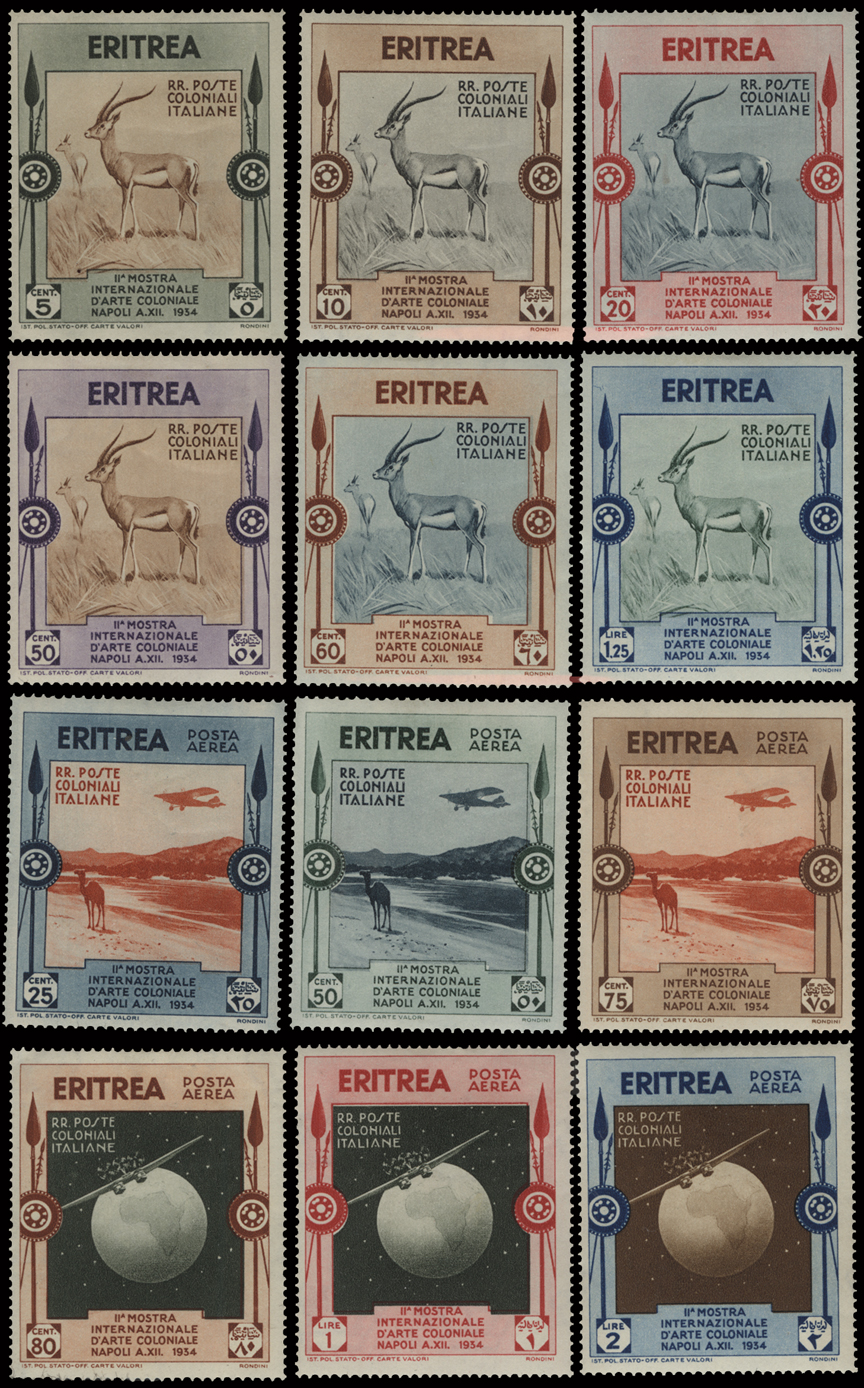Eritrea
Second Colonial Arts Exhibition Issue

Surface and air post issues of 1934 celebrating the Second Colonial Arts Exhibition in Naples
The first lands that would eventually become a part of the Italian colony of Eritrea were acquired from an Italian shipping company in 1882, two years after the first Italian settlement of the area around Assab Bay. By 1883 stamps serving Italian post offices overseas were in use. Italy expanded its influence and control up the coast to Massawa and into the interior highlands. In 1890 the Colony of Eritrea was officially established with its capital in Asmara. In 1892 the first stamps of Italy were overprinted "Colonia Eritrea" for use in the colony. Over the next 49 years until British occupation during World War II, over three hundred regular, semi-postal, air post, special delivery and postage due stamps were issued for the colony. It was the most advanced of Italy's East African colonies with the largest settler population.
The surface and air post stamps issued in 1934 celebrating the Second Colonial Arts Exhibition in Naples reflect Mussolini's Fascist administration's desire to celebrate the soon-to-be-declared second Roman Empire with exotic images framed with a modern art deco motif. The surface post values depict grant's gazelles framed with African spears and shields. The lower values of the air post issue have the same frame around a desert scene depicting a camel with an airplane flying overhead. The higher air post values show an airplane and the globe with Africa featuring prominently. These attractive large bicolour stamps combined propaganda value with appeal for the philatelic market.
Bibliography
"Eritrea."